Just 21% of content produced by marketers is bottom funnel content, says a report by CMI. In contrast, 47% of all content created is top-funnel content, and 29% is middle funnel content.
Why? Because most of the brands that invest in content marketing start with top of the funnel content – the content which is meant to generate brand awareness.
For instance, they begin writing blog posts about topics their audience Googles for. The idea is to get traffic to their website and make visitors aware of their brand proposition.
However, writing bottom of the funnel content should be the starting point, not pushed to the end. So in this post, we’ll talk about what bottom of the funnel content means, why it comes first, its types, and everything else you need to know.
What is bottom of the funnel content?
Bottom of the funnel content is the content you create for an audience who is already aware of a need, interested in evaluating available solutions, and looking to buy a product or service to meet that need.
This audience is past the awareness (top funnel) and interest (middle funnel) stages of the content marketing funnel. So these prospects are ready for the conversion (bottom funnel) stage.
The conversion stage, also known as the action stage, includes actions such as:
- When a buyer completes an order
- When someone subscribes to your email list
- When a prospect joins your membership program

Image Source: FullStory
Look at it this way: The main purpose of top-funnel content is being found, and that of mid-funnel content is to capture and nurture interest.
But the purpose of bottom funnel content is purely to sell. Or in other words, to convert a lead to a customer.
It can be published, formatted, and delivered in a number of ways like PDF white papers, landing pages, email copies, or videos.
And since it directly connects your product/service to customers, it’s mostly prepared in collaboration with the product team (for product knowledge) and sales team (for customer-facing knowledge).
Why bottom funnel content comes first?
Think about it. Content creation and marketing is a long-term game. And it’s easy to lose steam and pull the plug when the results are not anywhere near immediate sight.
Moreover, when you’re starting with content creation for a brand, there are always some doubts. You or people in your team may not be sure that this whole content writing thing will work. Your client or boss may not see the value in it.
As a result, you want some quick wins asap under your belt to help you keep going. In other words, you and the people working with you would want to see first-hand how content helps sell and make money.
In any case, the cash you can have today is always worth more than what you may or may not have in the future. The bottom line is, that you’ll be better off getting some ROI sooner than later.
Now keeping that in mind, what’s the fastest way to make this happen? Pick an option:
- Option 1: Targeting people who aren’t even aware yet that they might need what you’re selling
- Option 2: Targeting people who know they have a need and are actively looking to purchase a solution
We’re sure you picked option 2.
Readers that visit your website via top funnel content (which was option 1) still have a long way to go before they turn into buyers.
In fact, pick up any text on basic marketing or customer acquisition 101, and you’ll see that when you have a new offering, it’s always wise to sell to existing customers first, instead of trying to get new ones.
To better understand, look at the given graph. It shows two shops, each has 100 buyers purchasing a $10 product monthly. The shop retaining 10% of its buyers is in dark purple, and the shop in light purple has 5% retention.
As evident, the shop retaining 5% more is seeing a big jump in revenue. It will be hard to achieve this result with only new buyers.
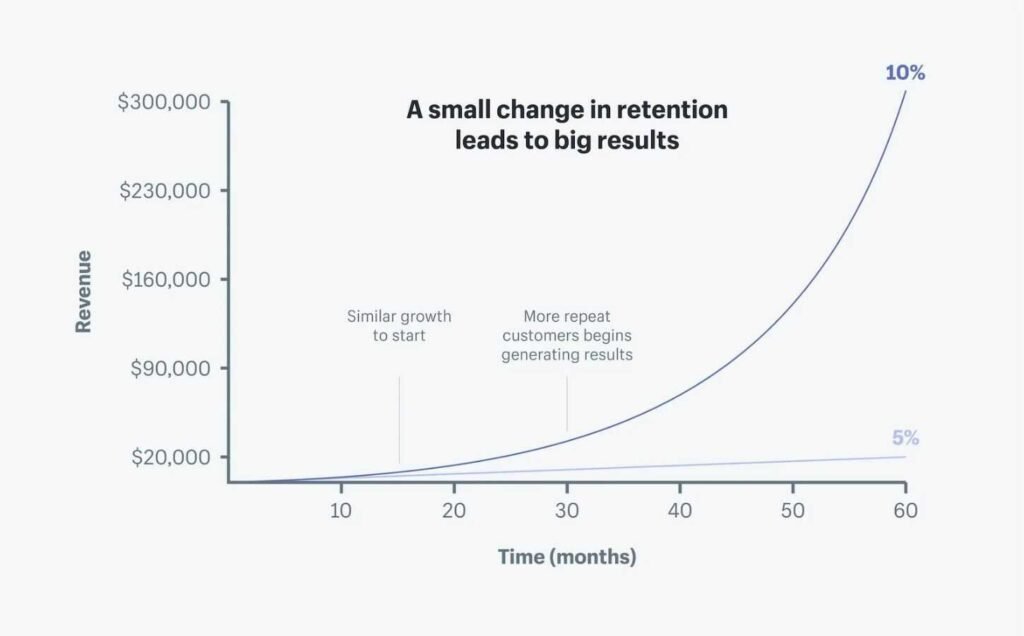
Image Source: Shopify
By the same logic, it’s easier to sell to people who are already interested in buying, instead of starting with the clueless. And to target these people, you need bottom of the funnel content.
To sum up, bottom funnel content comes first because it allows for a faster path to success than going the other way round.
Not only you’ll start making money sooner, but you’ll instill everyone with the confidence needed to justify creating more content, in order to cover all the three stages of the content funnel: bottom, middle and top.
Types of bottom funnel content
As per a Semrush survey, 51% of B2B and B2C marketers think product overviews are best for conversion. And other essential types of bottom funnel content are:
- Customer reviews (49%)
- Success stories (43%)
- Use cases (30%)
- Case studies (25%)
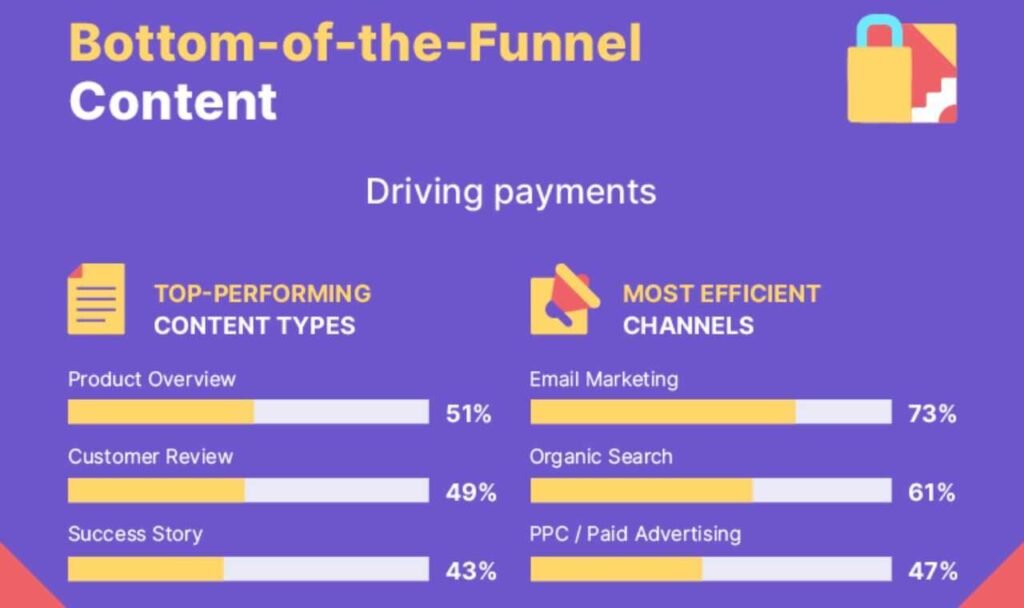
Image Source: Search Engine Journal
As you can see, there are several different types of content you can create that fall under the umbrella of bottom funnel content.
Depending on the nature of our business, all these forms of bottom-of-the-funnel content could be essential to engage and turn leads into buyers. Let’s take a closer look:
Case studies
Data from Marketing Charts shows that 60% consider case studies as the most trusted form of content.
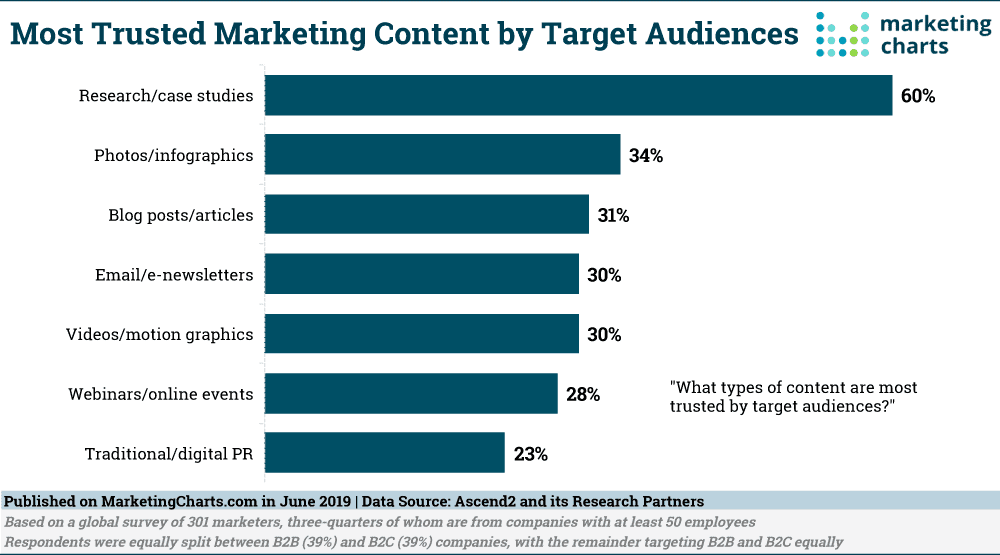
Image Source: Marketing Charts
This is one of the classic bottom funnel content types. Case studies show your prospects the results other buyers have achieved as a result of using your product or service. So the prospects can envision similar success for themselves.
For example, look at this case study of how Intercom helped Copper (formerly ProsperWorks) to generate 19 new opportunities in a month.
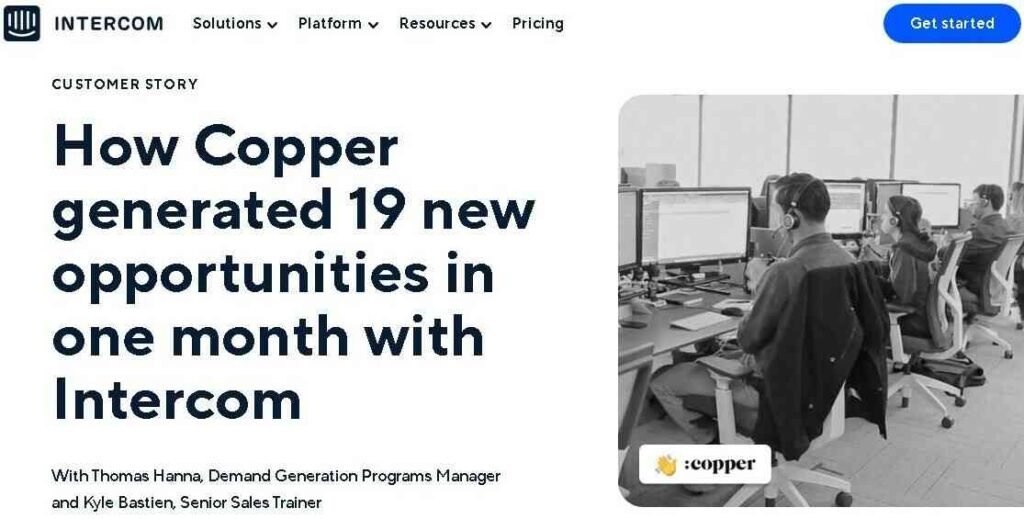
Writing a case study involves reaching out to your happy customers and requesting them to collaborate on creating a story around their success. A good case study clearly outlines:
- The core problem that your client/customer was facing before they bought your product or service.
- What service approach or product features helped them solve the problem and how (without giving away any confidential information).
- The concrete results achieved (with real numbers/data if possible) by the end of the duration associated with the case study.
- A short summary/blurb that you or your sales team can easily share in customer calls or emails.
Once you have some case studies prepared, the most common way to distribute them is by creating a portfolio/case studies page on your website. Then make your case studies available on that page.
Product updates
Product updates are great for both potential and existing customers to let them know what you’ve been up to.
As the bottom of the funnel content, they are especially useful for prospects who disengaged before because of a missing feature. For example, see this product update by Trello, and this one by Wistia.
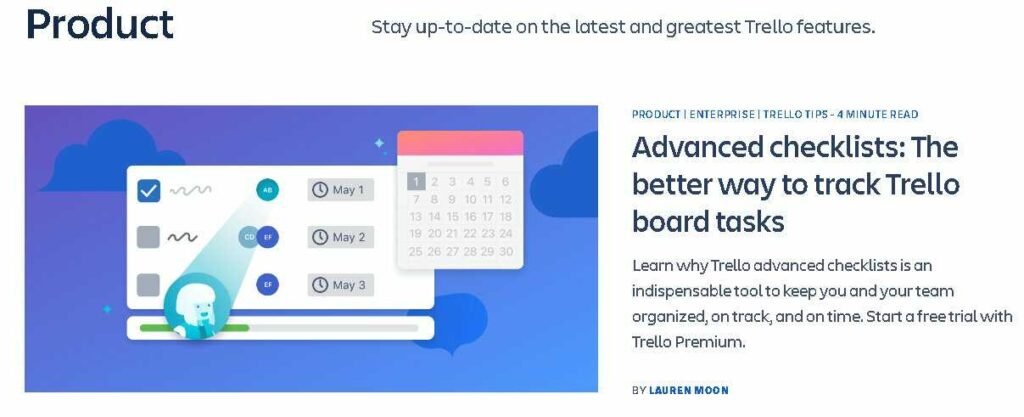
As we mentioned before, writing a product update requires close collaboration with the product and sales teams. A good product update piece includes:
- What exactly the update entails or does, and the story behind why it was implemented.
- Whether it’s available to all or select customers, and how to activate, access, and make use of this new offering.
- How the update impacts the customers, along with the main benefits it has for them, as compared to what was before.
Product updates are typically distributed via blog posts and newsletter emails. And they also make for great social media posts.
Product features/use cases
This content talks specifically about the individual features of your product or service, along with associated benefits and use cases.
It doesn’t just show your audience that your product can solve their problems, but also inspires them to use it in new ways they didn’t think of.
A great example of this is content created by Airtable. Since they have a product that can be used in a hundred different ways, they come up with use cases like how to build a better budget, or a content marketing pipeline with Airtable.
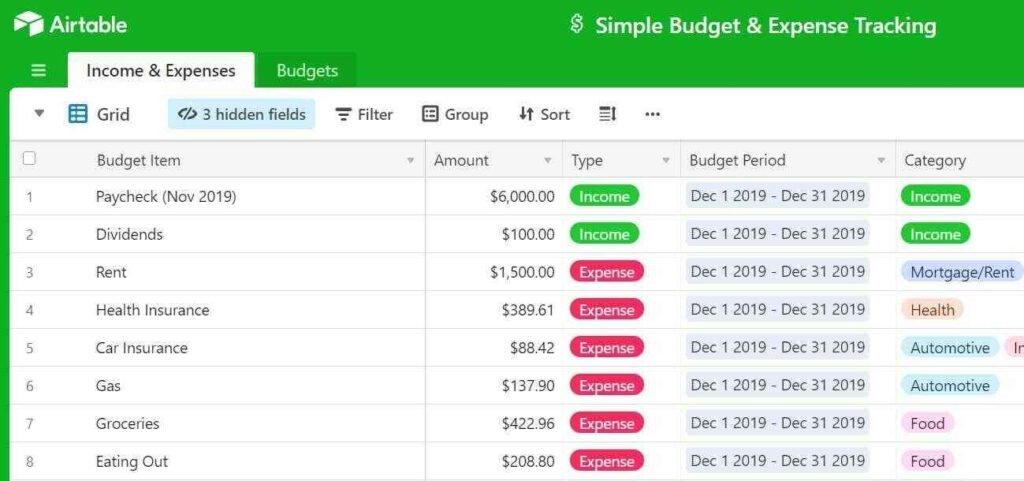
You can create this content based on specific search queries and sub-problems that your product addresses.
Another way is to think about all the influencers and decision-makers in your sales cycle. Then come up with use cases for each segment involved in the purchase process.
Use cases are distributed via your website, newsletter emails, and sales team to pass on to prospects and partners.
Comparison with competitors
It’s never been easier to find information on any type of product or service you may be interested in. So let’s face it: Yours is not the only product/business a prospect is considering.
They’re probably weighing their options. They’re wondering what makes your product different from the alternatives in order to make an informed decision.
Don’t put your head in the sand about this. Acknowledge and embrace it. Address this objection head-on. Create content that gives a comprehensive feature-by-feature comparison, depending on the complexity of your offering.
For example, here’s how ClickUp compares itself with Monday, and how Clearbit created content addressing how it differs from Data.com.
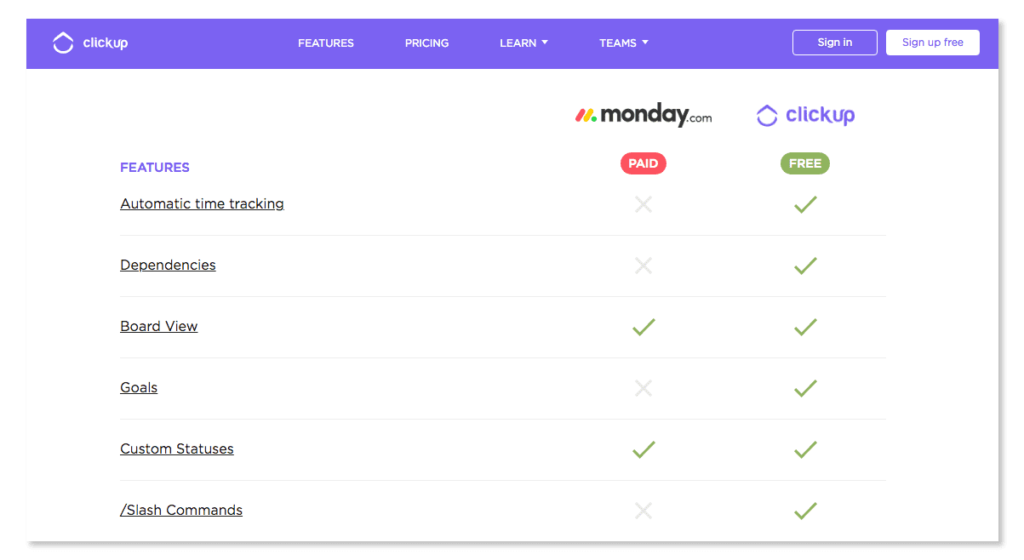
User documentation/knowledge base
Support is one of the major concerns any prospect has before purchase. They want to be sure whether they’ll be able to understand, use and get support for the product.
Moreover, some prospects like to go deep. Instead of learning about a feature or benefit at a superficial level, they may want to get more details on how it exactly works.
That’s why you must have a comprehensive, up-to-date, and easy-to-navigate knowledge portal to address these needs.
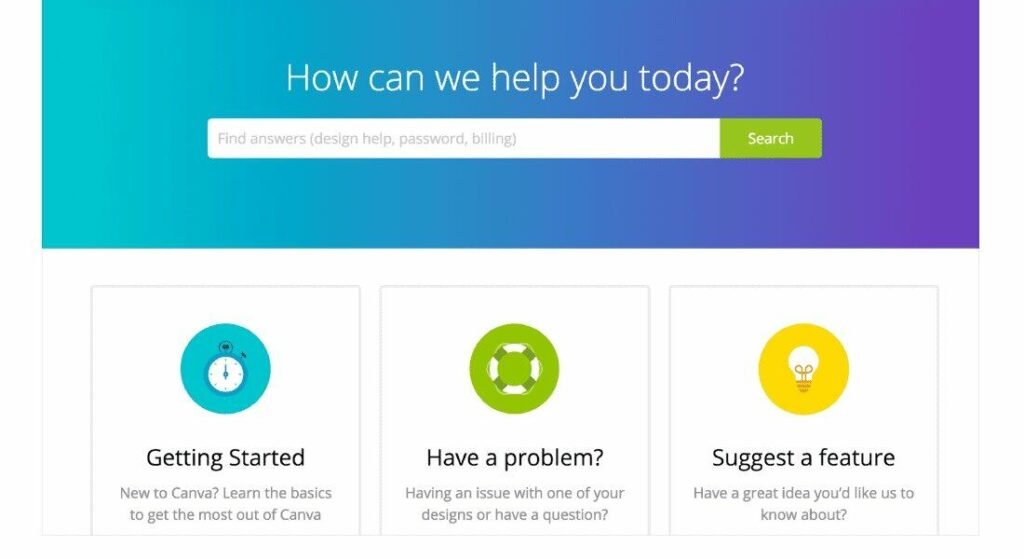
Your documentation will consist of all the content that may help improve your product’s usage, adoption, and retention. This includes:
- Product tour, walkthrough, or demonstration
- Quickstart guides and feature tutorials
- Best practices and troubleshooting instructions
- Frequently asked questions
Depending on the complexity of your product or service, your knowledge base should have as many pieces of content as needed to cover everything a customer should know or asks for in relation to the product.
Reviews/testimonials
According to a study from Bizrate, online buyers highly value a good rating. While purchasing they rank it over vouchers, loyalty bonuses, and free delivery.
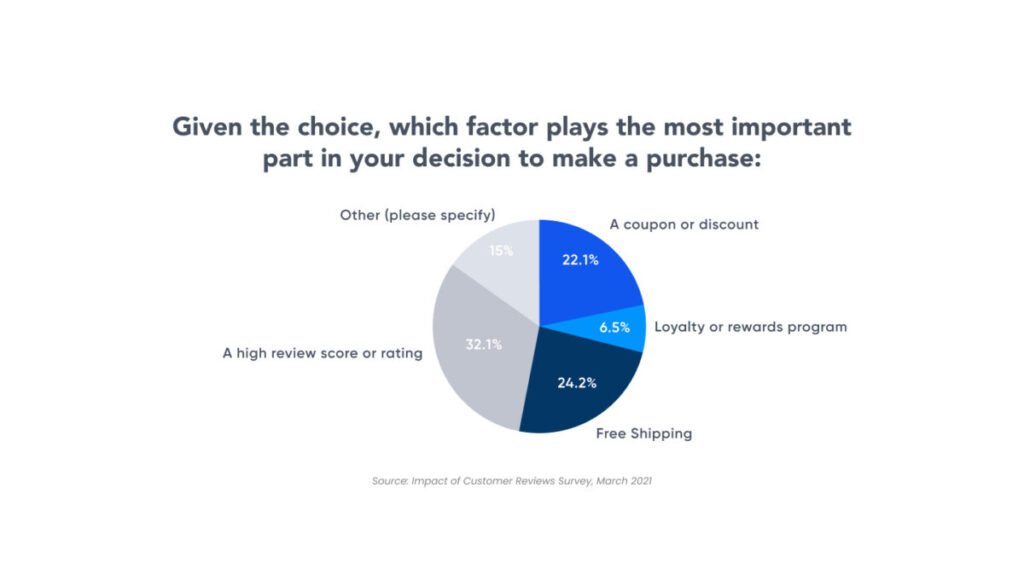
Image Source: Bizrate Insights
Customer reviews, testimonials, and recommendations are also part of the bottom of the funnel content, though they are not always 100% in your control.
Having a stellar reputation is a significant advantage. Hearing honest feedback from current clients is often the main source of trustworthy information for potential clients. It gives them a preview of what it would be like to become your customer.
Needless to say, you should have a system in place to collect and showcase testimonials from customers on your website.
So how do you go about getting positive testimonials? If you have ensured the best experience for your customers, many times all it takes is just asking them.
It’s also important to solidify your ask by offering incentives and making the process as easy to follow as possible.
Don’t make them jump through any hoops or technical mumbo jumbo just to leave feedback.
You can contact them with questions by email/phone, or send them to a 3rd party review site like G2 Crowd, Capterra, or Glassdoor. Here’s a good example.
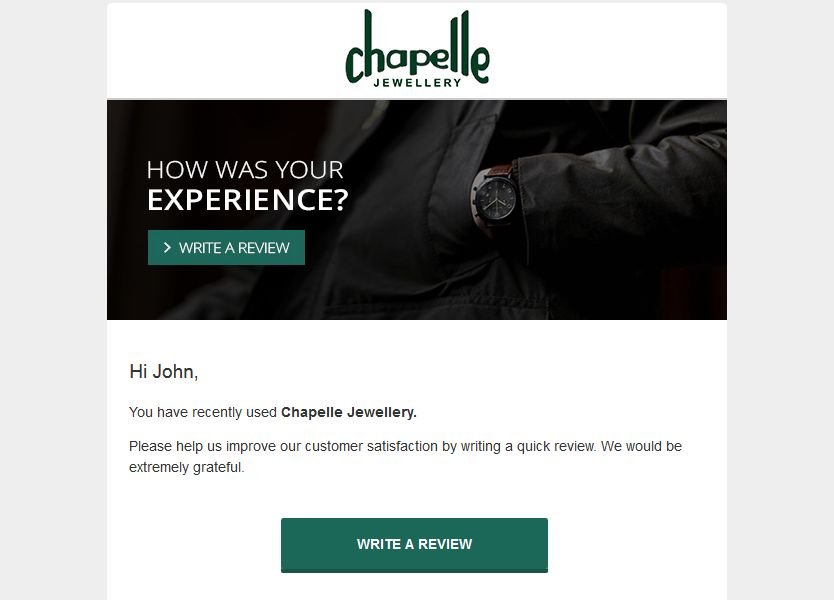
Image Source: REVIEWS.io
Timing is another important factor. You should ask for a review or testimonial when the memory of your product or service is still fresh in their mind. Not after the fact.
The reviews you generate are not just great to showcase on your website, but can also be used in other collateral like case studies, presentations, and infographics.
Product/service copywriting
Any sales or marketing copies you create to describe or promote your product also comprises bottom-funnel content. These include content for product/service pages, landing pages, calls to action, promotional emails, etc.
This type of content explains what the product is and why it’s worth buying. The goal is to provide important information about its features and benefits so the prospects are compelled to purchase.
Your product landing page copy plays a leading role in sharing more detail on your product and encouraging them to buy your product.
The best product copies speak to your prospects on a direct and personal level. They empathize with them and are conversational in nature.
For example, see how Think Geek starts the product description of an LED Flashlight.
You know what’s sucky about regular flashlights? They only come in two colors: white or that yellowish-white that reminds us of the teeth of an avid coffee drinker.
What fun is that kind of flashlight? We’ll answer that: NO FUN AT ALL.
You know what is fun? Using the Multi-Color LED Flashlight to cast a sickly green glow over your face while telling a zombie story around a campfire.
When it comes to writing a sales copy, imagine your ideal buyer and speak in their own language. Consider what would you say if you were selling in a store, face-to-face, instead of the written word. Then put that into writing.
Contact, pricing, checkout pages
Once a prospect has learned a bit about your product or service, they might be ready to take the next step. So they’d probably want to contact and enquire about your service, or add your product to the cart.
So the content of your contact, pricing, and checkout pages is another crucial bottom of the funnel content. And even more so considering how many visitors abandon the cart or bounce off the contact page right before following through.
When writing content for these pages, you need to maintain the same level of trust that brought your prospects to this page. And keep focusing on the benefits of doing business with you.
For example, see this contact page by Choice Screening. Without a doubt, the best part of this page is the content. It assures the prospect that they’ll be dealing with a trustworthy human, not a bot or an unreliable customer care person.
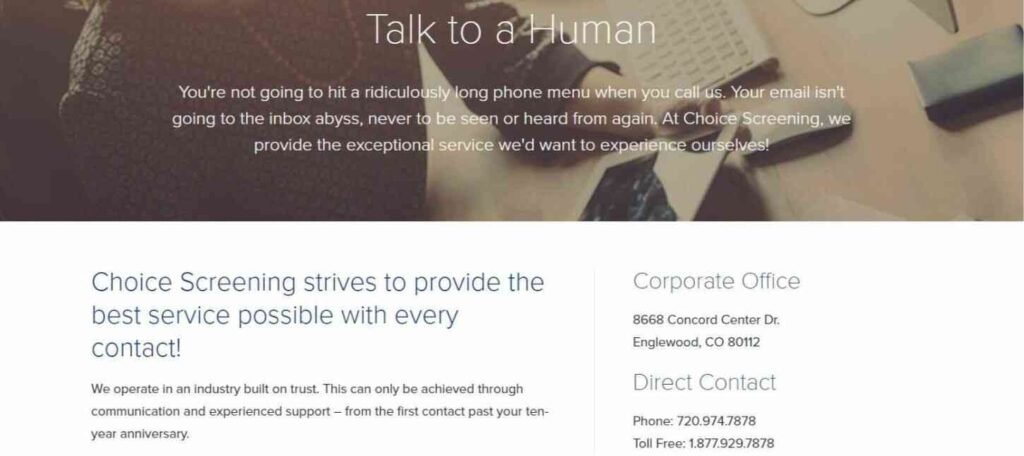
It also includes necessary details like contact information for different departments, followed by a form.
In addition, try to create a sense of urgency or exclusivity to motivate prospects who are on the fence. For instance, convey when a deal is about to be closed, or if the product has limited availability.
Bottom funnel content performance analysis
The performance of bottom of the funnel content is analyzed differently than top of funnel content.
Measuring traffic, like you do with top funnel content, isn’t useful because traffic generation isn’t the main goal for bottom funnel content. The main purpose is conversions.
As per Databox research, 30% of marketers consider 3.1 to 5% to be a good conversion rate. Also, some (18%) marketers say it is 5.1 to 8% and 1.1 to 3%. Lastly, a few think it should be between 11-20%.
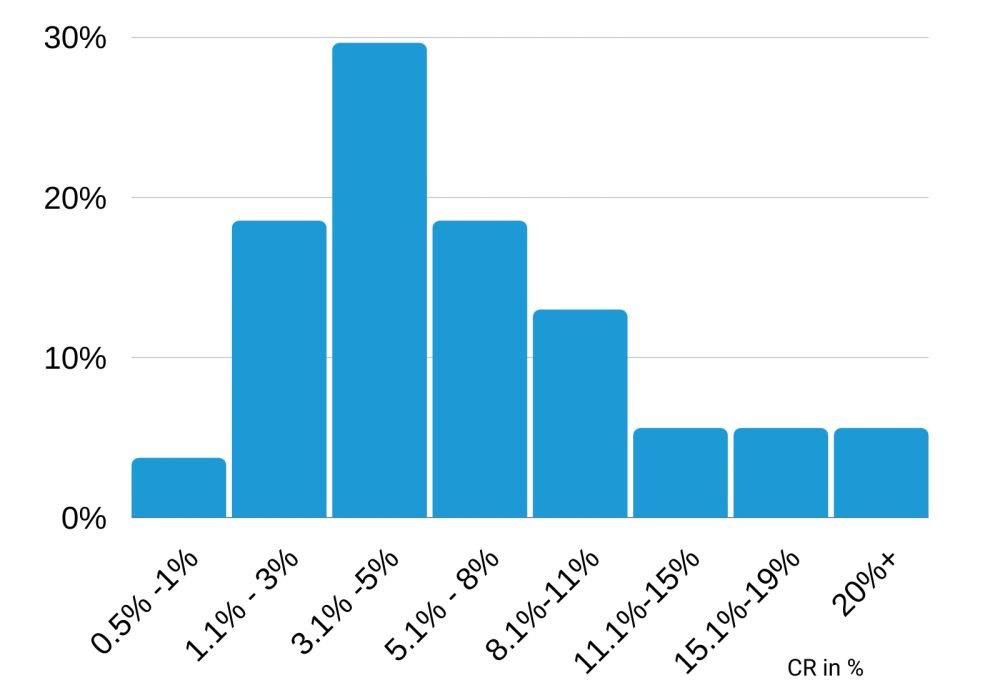
Image Source: Databox
But conversion rate alone isn’t enough. It’s best to combine it with qualitative metrics like feedback from the sales and other customer-facing teams.
They’ll often have the best view on whether the content is actually helping them engage leads and close deals.
In fact, the better test for your bottom-of-the-funnel content is not whether it’s increasing conversions, but rather if it’s reducing drop-offs.
If it’s preventing disengagement and keeping prospects in the sales cycle longer, you can tell it’s working.
Summing up bottom of the funnel content
The gist of this post is that you need to start thinking beyond traffic. Traffic is not the end goal. Rather, it’s just a step towards conversions. Traffic will not do much if your website doesn’t have bottom of the funnel content which can convert visitors into leads and buyers.
So take a look at your content calendar and see if you have been prioritizing bottom funnel content as much as the other content types. Then take steps to fill the gaps.
You’ll soon see a big difference in increasing the productivity and success rate of your sales team.
Did we miss anything? Did you try these bottom funnel content types? Do you have any questions or comments? Share your thoughts below in the comments section.


